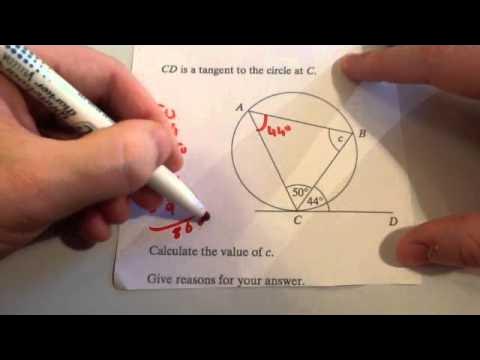Definitions of an Ellipse | MATHS | JEE | Concept of the Day | GB Sir
Summary
TLDRThe transcript delves into a detailed explanation of geometric and mathematical concepts, focusing on definitions, theorems, and theorems about the relationship between points in geometry. It discusses the SP (starting point) and PM (point of measurement), their interactions, and how they relate to distance, position, and theorems involving various geometric structures. There is an exploration of loci, fixed points, triangles, and calculations using variables like TV and PM. The script also touches on complex number representations in coordinate geometry and their real-world applications in geometric modeling and problem-solving.
Takeaways
- 😀 SP and PM are fundamental geometric elements related to centricity and distances in coordinate geometry.
- 😀 The relationship between SP and PM is defined by their relative values, with SP typically being smaller than PM in certain conditions.
- 😀 The concept of a locus is explored, showing how points satisfying certain conditions can trace paths like straight lines or curves.
- 😀 The role of delta (discriminant) in geometric equations helps determine the nature of conic sections like parabolas and ellipses.
- 😀 The lecture explains how geometric structures, like triangles and lines, are formed based on varying distances between points.
- 😀 The importance of fixed points in geometric constructions is emphasized, with SP and PM playing key roles in these constructions.
- 😀 The lecture demonstrates various relationships using geometric figures, such as triangles and straight lines, to explain how different conditions affect these shapes.
- 😀 The connection between complex numbers and geometry is introduced, with complex numbers used to solve locus problems and geometric relationships.
- 😀 Geometrical models and diagrams, such as the ones used to explain the SP and PM relationship, are essential for visualizing the theory.
- 😀 The importance of applying geometric principles, like locus, is demonstrated in real-world mathematical problems, especially in the context of geometry and coordinate systems.
Q & A
What is the basic definition of SP and PM as described in the transcript?
-SP and PM are related to centricity, with SP being greater than PM when on a high, and when relaxed, SP is smaller than PM. SP is used to determine centricity in relation to specific points in the diagram.
How is centricity depicted and what does it signify in this context?
-Centricity is shown as small and semi-formed, indicating the balance between SP and PM. It helps in determining the spatial relationship between certain points in the diagram.
What happens when SP is equal to PM?
-When SP is equal to PM, a balance is achieved, indicating that the relationship between the points is symmetrical. The treatment is considered 'rich' when the points are balanced.
What role does SP play in relation to fixed points?
-SP represents the distance between verify points on fixed points. It is used to map out the spatial relationships in geometrical structures.
Can you explain the significance of the second definition mentioned in the transcript?
-The second definition introduces a more complex, non-homogeneous equation involving squares and trigonometric functions. This definition is used to explore relationships between different variables and their impact on geometric shapes like parabolas.
What happens when delta is not equal to zero in the context of the second definition?
-When delta is not equal to zero, it leads to a scenario where the shape formed by the variables is a parabola. The equation is key to determining the structure and behavior of points in the diagram.
What geometric structure is formed when the equation involves a value of delta not equal to zero?
-When delta is not equal to zero, a parabola is formed. The relationship between the points follows the rules of conic sections, specifically parabolas in this case.
What does the locus of TVS represent in this context?
-The locus of TVS refers to the set of points traced by a moving point, and it helps in visualizing the path followed by points in a geometric figure. This is used to describe relationships between points in the diagram.
What is the role of the equation 'PL + PB = 0' in the context of the locus?
-The equation 'PL + PB = 0' is used to define the relationship between the points P, L, and B. It helps in determining the position and movement of points along the locus, forming a line or shape based on the given conditions.
How is the concept of triangles applied in this script?
-The script applies the concept of triangles by analyzing relationships between sides and angles. It uses these triangles to explain geometric properties and how changes in one variable affect the entire structure.
Outlines

هذا القسم متوفر فقط للمشتركين. يرجى الترقية للوصول إلى هذه الميزة.
قم بالترقية الآنMindmap

هذا القسم متوفر فقط للمشتركين. يرجى الترقية للوصول إلى هذه الميزة.
قم بالترقية الآنKeywords

هذا القسم متوفر فقط للمشتركين. يرجى الترقية للوصول إلى هذه الميزة.
قم بالترقية الآنHighlights

هذا القسم متوفر فقط للمشتركين. يرجى الترقية للوصول إلى هذه الميزة.
قم بالترقية الآنTranscripts

هذا القسم متوفر فقط للمشتركين. يرجى الترقية للوصول إلى هذه الميزة.
قم بالترقية الآنتصفح المزيد من مقاطع الفيديو ذات الصلة

MATEMATIKA KELAS 8 HALAMAN 142-143 KURIKULUM MERDEKA EDISI 2021

MATHEMATICAL SYSTEM || POSTULATES AND THEOREM || GRADE 8 MATHEMATICS Q3

Introduction to Projective Geometry | WildTrig: Intro to Rational Trigonometry | N J Wildberger

Circle Theorems questions - Corbettmaths

🔥Aula de Matemática PM-AL e CBM-AL | Ângulo, Segmento de reta e Reta

Lingkaran kelas 11 / Video Teorema Lingkaran
5.0 / 5 (0 votes)
